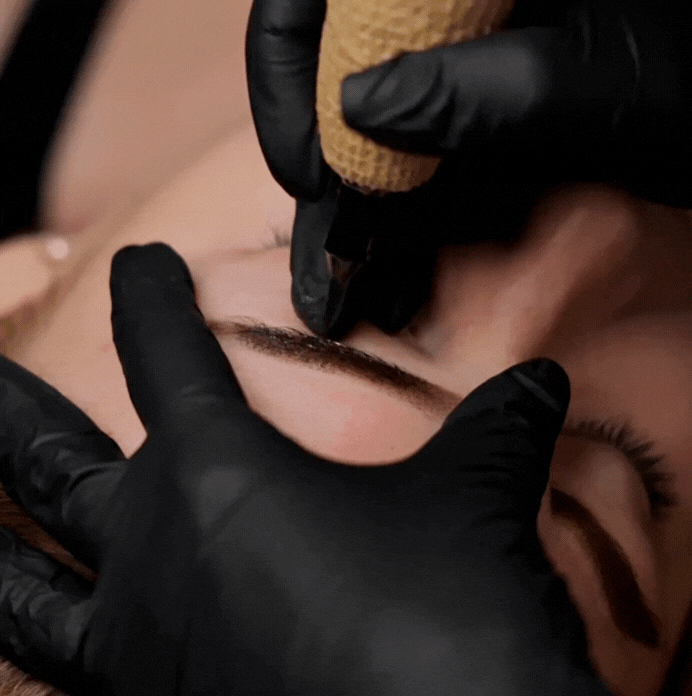Microblading
Achieving perfectly shaped, realistic eyebrows has never been easier thanks to semi-permanent makeup. One of the most sought-after techniques is microblading, a method that creates fine, hair-like strokes to mimic the natural look of eyebrow hairs.
Unlike powder brows, which use a shading technique for a soft makeup look, microblading focuses on individually drawn strokes for a natural, realistic appearance. It’s an excellent choice for those who want to fill in sparse areas while keeping a subtle finish.
In this guide, you’ll learn everything about microblading—how it works, its benefits, aftercare, cost, and how it compares to other brow enhancement methods.
What Is Microblading?
Microblading is a semi-permanent eyebrow technique that uses a handheld tool with ultra-fine needles to implant pigment into the upper layers of the skin.
The result is a series of delicate, hair-like strokes that blend seamlessly with your natural brow hair.
Microblading is perfect for individuals who:
Have thin, patchy, or uneven brows
Want a natural look without heavy makeup
Prefer a more defined shape that still appears realistic
Benefits of Microblading
- Perfect for a subtle, realistic brow enhancement.
- Designed to complement your facial structure.
- Wake up with ready-to-go brows every day.
- No more brow gaps or unevenness.
How Is a Microblading Procedure Done?
1. Consultation & Brow Mapping
We discuss your goals and map your brows according to your face shape and symmetry.
2. Numbing Process
A topical numbing cream is applied to keep you comfortable.
3. Stroke Creation
Using a fine manual tool, pigment is deposited in precise hair-like strokes to mimic natural brows.
4. Healing & Recovery
Brows appear darker for the first few days, then soften to a natural shade during the healing process (about 10–14 days).
How Long Does Microblading Last?
Microblading results typically last 12–18 months, depending on skin type, lifestyle, and aftercare.
Touch-ups are recommended once a year to maintain the look.
Microblading Aftercare Tips
- Gently blot away excess fluid.
- Keep brows dry for at least 7 days.
- Let flakes heal naturally.
- Apply as instructed for best pigment retention.
- Use SPF to prevent fading.
Who Is a Good Candidate for Microblading?
Microblading is ideal for:
- People with naturally thin or sparse brows
- Those wanting a natural, low-maintenance brow solution
- Individuals without major skin sensitivities in the brow area
Not suitable for:
- Pregnant or breastfeeding women
- People with certain skin conditions or pigment allergies
Cost of Microblading
Pricing varies based on the artist’s experience and location.
An initial session includes consultation, mapping, and treatment. A perfecting touch-up (4–8 weeks later) is usually an additional cost.
Risks & Side Effects
Common:
- Mild redness or swelling
- Temporary scabbing
Rare:
- Allergic reaction to pigment
- Infection if aftercare is not followed
Minimize Risks: Always choose a trained, certified professional and follow aftercare instructions closely.
How to Choose the Right Microblading Artist
- Ensure proper qualifications.
- Look for consistent, natural results.
- Find trusted professionals with happy clients.
FAQs
Q: Is microblading painful?
A: Discomfort is minimal thanks to numbing cream.
Q: How long does the session take?
A: Around 2–3 hours, including consultation and mapping.
Q: Can microblading be corrected or removed?
A: Yes, using saline or laser removal methods.
Q: Does it work on over-plucked brows?
A: Absolutely—it’s ideal for restoring fullness.
Conclusion – Is Microblading Right for You?
If you want natural-looking, hair-stroke eyebrows that last over a year without daily makeup, microblading is an excellent choice.
With proper aftercare and annual touch-ups, you can enjoy perfectly shaped brows day after day.

MICROBLADING
Microblading is a semi-permanent eyebrow treatment that creates natural, hair-like strokes using a fine manual tool. Perfect for filling gaps, defining shape, and achieving realistic, fuller brows that last 12–18 months with minimal upkeep.




